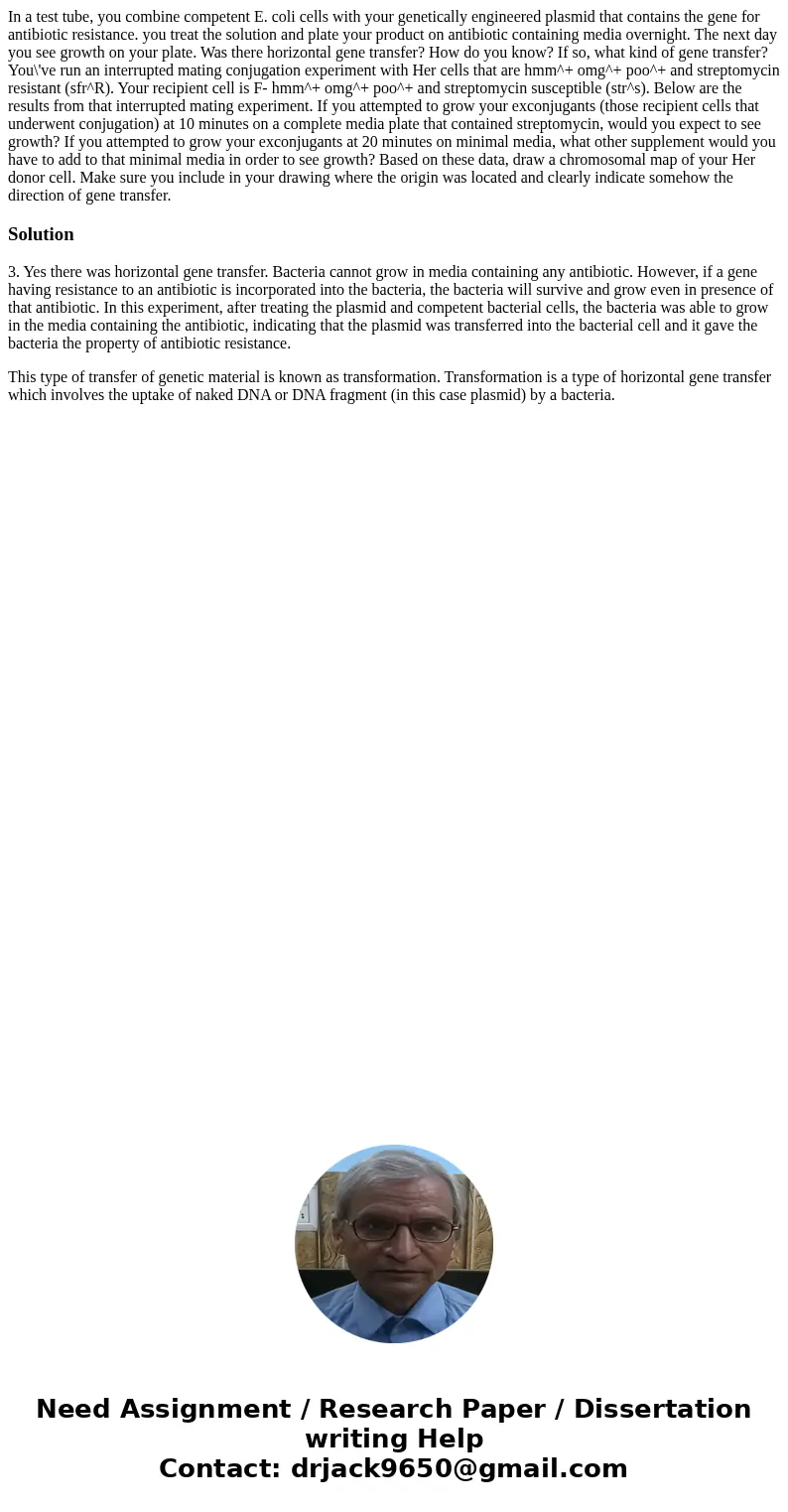In a test tube, you combine competent E. coli cells with your genetically engineered plasmid that contains the gene for antibiotic resistance. you treat the solution and plate your product on antibiotic containing media overnight. The next day you see growth on your plate. Was there horizontal gene transfer? How do you know? If so, what kind of gene transfer? You\'ve run an interrupted mating conjugation experiment with Her cells that are hmm^+ omg^+ poo^+ and streptomycin resistant (sfr^R). Your recipient cell is F- hmm^+ omg^+ poo^+ and streptomycin susceptible (str^s). Below are the results from that interrupted mating experiment. If you attempted to grow your exconjugants (those recipient cells that underwent conjugation) at 10 minutes on a complete media plate that contained streptomycin, would you expect to see growth? If you attempted to grow your exconjugants at 20 minutes on minimal media, what other supplement would you have to add to that minimal media in order to see growth? Based on these data, draw a chromosomal map of your Her donor cell. Make sure you include in your drawing where the origin was located and clearly indicate somehow the direction of gene transfer.
3. Yes there was horizontal gene transfer. Bacteria cannot grow in media containing any antibiotic. However, if a gene having resistance to an antibiotic is incorporated into the bacteria, the bacteria will survive and grow even in presence of that antibiotic. In this experiment, after treating the plasmid and competent bacterial cells, the bacteria was able to grow in the media containing the antibiotic, indicating that the plasmid was transferred into the bacterial cell and it gave the bacteria the property of antibiotic resistance.
This type of transfer of genetic material is known as transformation. Transformation is a type of horizontal gene transfer which involves the uptake of naked DNA or DNA fragment (in this case plasmid) by a bacteria.

 Homework Sourse
Homework Sourse